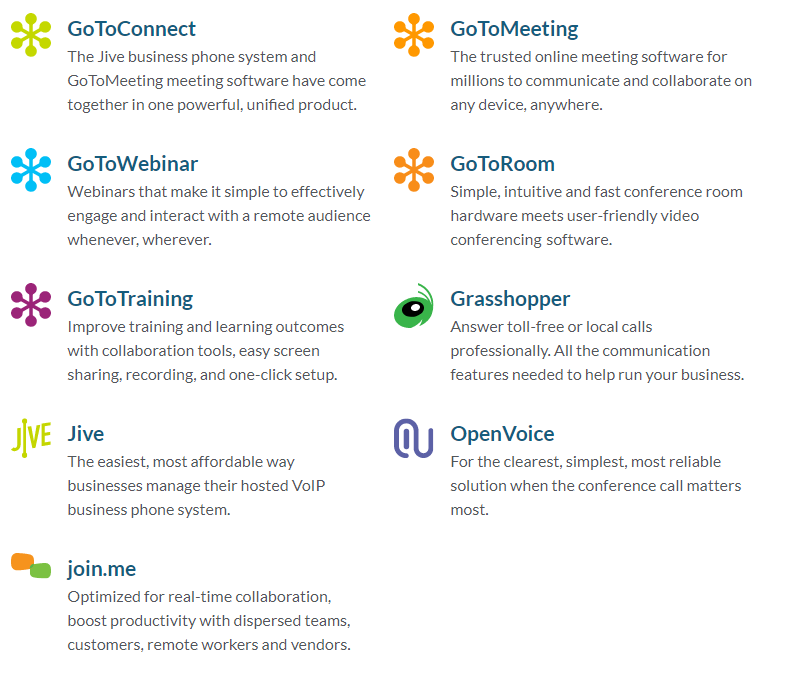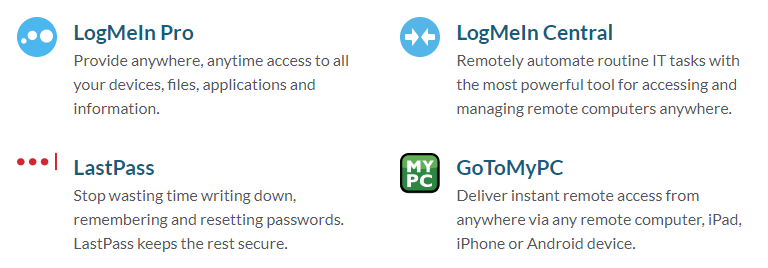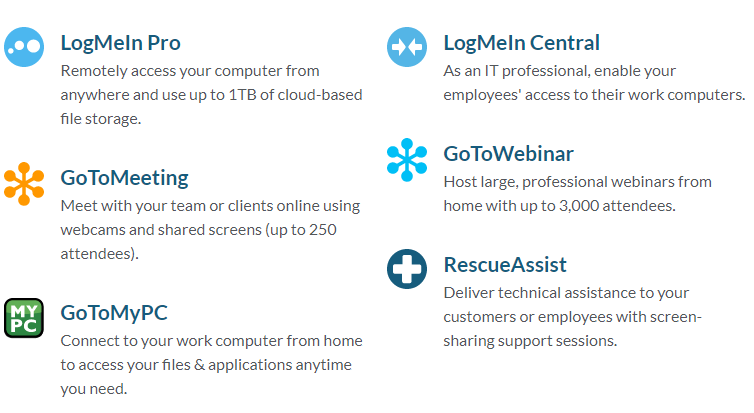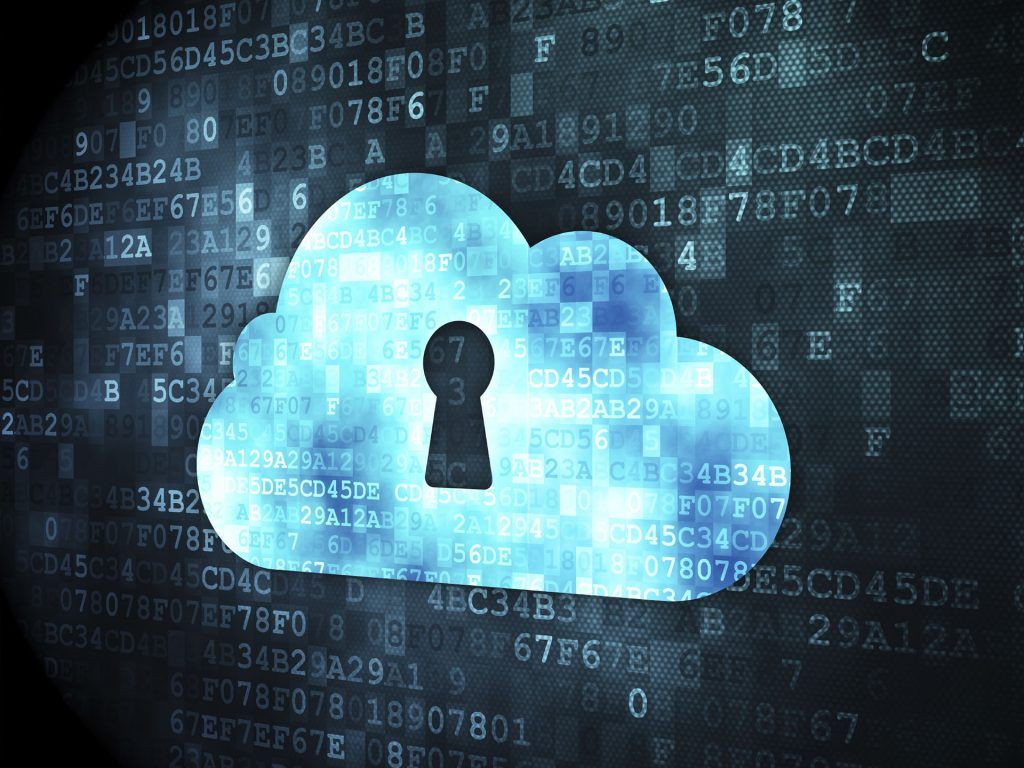When we talk about the SaaS industry, LogMeIn is among the oldest players. With over $1billion valuation, it’s also among the biggest companies with a slew of products – be it GoToMeeting, a popular video conferencing software or LastPass, a renowned password manager. Amidst COVID-19, the rise of video conferencing and remote work has made a company like LogMeIn all the more important. We recently got a chance to interact with LogMeIn India’s Managing Director, Mr Rahul Sharma, about the company’s journey, how it’s stepping up during this critical situation and what the future looks like for the company.
PS: The interview has been edited for the sake of brevity.

1) While people are talking about SaaS in the past few years, LogMeIn is among the pioneers of this space… can you share how the journey has been?
Talking about the company’s journey, Sharma reminisced “when I look back on the LogMeIn’s journey, we started our work in about 2003, and not many people know that we were actually founded in Budapest in Hungary. Ok, our inception is an interesting story. 2003 was the very early days of the Internet, and people are trying to figure out how we can use it and we’ve just come out of the Y2K bug. During that time, we actually started off by focusing on a very specific problem, which was around the remote access area. We developed a software, which essentially allowed IT administrators, to remote, into computers in the office, and, you know, take backups to restart the computer, or just, you know, do anything, which you could do with the remote access software. Now, back in the day, it was something which, which nobody had done, then, essentially it started off from, you know, one of our co-founders, who was an IT administrator, in one of the big organizations in Budapest, actually had what as one of the responsibilities to go to the office at like 3AM In the morning, and take a backup and then restart the server because it was timed with the US financial markets.”
Explaining further, he said “essentially, what we started off with is basically providing remote access technology to IT users across the globe. We reached a point where we got a million users in the first three years and that gave us the confidence that there is a lot of headroom for growth for us to go forward in this space. Afterward, we went back to the US and got registered. We got listed on NASDAQ in 2006 and which gave us the second phase of our growth journey in which we were still a small company doing about $100 million in revenue.”
“During this phase, we identified areas which were adjusted to remote access as a technology. So people who are not only using remote access to remote into infrastructure that they had, across the globe, they also wanted to see how they can provide support to those infrastructure.Mobile phones started emerging at that point of time, and that was a big driver for remote support as a technology to be embraced. Online collaboration became, you know, the early days of online collaboration started coming out during the type. And interestingly, there was another bit of trend which was emerging, was live chat. So, we doubled down on our efforts in terms of creating products. In some cases, we created products, while in others, we acquired technology from various inorganic growth strategies that we had. We did that pretty much till 2017, where we know, became about $350 million in in, in business revenues. So we had about nine products, and offices across across continents. We had employees working in India, Australia, Europe, or North America, Latin America, and and gave us that reach and spread,” he highlighted.
Talking about the next phase of growth, Mr Sharma recalled: “in 2017, LogMeIn actually had a merger with the GoTo business of Citrix. And overnight, we went from being a $300 million organization to a billion-dollar organization. I’ve never had those moments in my career where the momentous shift was so big – from 1500 people we went to 4000 people, we had products and technologies, which scaled in multiple different directions. So, most of 2017 was spent on getting all the nuts and bolts of the business to start functioning with each other. That brought us firmly into our third stage of growth, which is basically acting like a billion-dollar SaaS company, which helps organizations to do productive work.”
“So, that’s been sort of our journey so far, but I guess we’re just getting started in terms of the possibilities of our technology being used by individuals, small organizations, and enterprises across the globe,” he added further.
2) LogMeIn entered the Indian market in 2010, so can you please share the growth you’ve seen in the past decade or so?
To this, he replied “in terms of our presence in India, we actually started off in an unconventional manner. Some of our biggest customers were US technology companies, the likes of Microsoft or Dell, Accenture, and all of these large organizations were customers for remote access, remote support products in the US. And they have big presence in India. So, they actually wanted support in the region in the country to help the teams to not only utilize our technology, but also get familiar with what’s happening in LogMeIn and get the engagement deeper.”
“Then we realized that there is a lot of potential in the country. From a technology standpoint, there’s a lot of business that happens between the technology communities in India and North America and Europe. So you have the likes of big IT system integrators, the likes of Infosys, Wipro, and Tech Mahindra, who are Indian organizations, but that their customers are based in geographies, which are outside of India. We actually started off by partnering with these technology organizations to take our technology to their customers. In some cases, they created the Center of Excellence and in others, they created their own product ecosystem under those technologies and took those to their customers across the globe,” he added.
He also mentioned “after 2017, we started operating at scale, as we realized there’s a lot of market in India itself, which is using our technology in individual capacities. We are extending our support and efforts to engage with the large enterprises. Even small and medium businesses, or startups with 2 or 3 people are using our solutions.”
3) Not one, not two, but LogMeIn has a range of products – could you help us understand the unifying theme across all your offerings?
Mr Sharma stated the fact that “LogMeIn has been the pioneer for remote working, but the intent is to help organizations do the best piece of work. For that, we have three broad categories of our products: unified collaboration, support, and identity and access. Products like GoToMeeting fall in the first bucket, while support is something that we’ve ramping up on. Supposedly, if you’re if you’re an e-commerce website, or a large organization who provides customer support, instead of traditional channels like phone calls, you could use digital channels like chatbots and AI and chatbots. Identity and access is also a popular category for us as it includes products like LastPass, which has millions of users.”

Ultimately the idea is to enable “frictionless experience of working from any location with technology doing its work in the background, allowing you to do your best work,” he explained further.
4) How’s the current user base of LogMeIn in India and across the world? In terms of customers and revenue, how does India stack up against other countries?
He mentioned “it’s difficult to answer the question from a straightforward numbers perspective, since most of our products are freemium, which means that a lot of our products can be used by people without actually paying for it. LastPass, for instance, has a huge freemium customer base. We don’t charge single-use LastPass users to pay for the technology. Even if I talk about remote support, the userbase goes into tens of thousands.”

Upon prodding further, he said “if I was to narrow it down, and give you a picture about how much of the usage of our products is from India, then there are some statistics that you will find interesting. If I look at meeting as a platform, 25% of all traffic that‘s going into the US, actually comes out of India. We’ve got over 5,000 organizations in India that use one or more of our services.”
In terms of India’s importance, Mr Sharma underscored that ”we operate on a regional model, which means that globally we have five regions – North America, Central America, Latin America, APEX and EMEA. Notice one thing, which is very common… all of these geographies are multiple countries. However, India is the only country which operates as a region separately. So that’s the significance of the market for us, where we have a dedicated focus on just the country, because of the nature and complexity of the business, the scale that is available, the adoption of the technology, and some remarkable work, which is happening various parts of the technology here.”
5) Could you please tell us which products have been doing the best in the subcontinent?
“So I would say a lot of our adoption in India is for Unified Collaboration which is GoToMeeting GoToWebinar and tools like that. A similar adoption comes from remote support, because till about three or four years back, we were considered to be the back office of the world. But, the fastest-growing segment has been the digital engagement platform, at least in the India-facing businesses. We see remarkable adoption of the AI chatbot, which is offered as part of Bold360. For example, you could see it in action in the mobile app of ICICI. And not just big companies, even smaller ones are opting for this since it’s a much more efficient way of handling customer queries,” Mr Sharma answered.

6) We’re living in challenging times due to COVID-19, and since many of LogMeIn’s products are to help with remote work and collaboration, how’re you helping with the situation?
According to Mr Rahul Sharma, “every challenge has a disguise of an opportunity. Of course, coronavirus pandemic is a serious concern and its sad to see how it has taken shape and impacted so many lives and businesses across the globe. But I do feel that this is probably going to be the reset time in which people, organizations, enterprises, businesses will step back and think about how to not let this event get created again. Which means that even if a catastrophe like this occurs again, how can I protect, first and foremost, my employees, which means that can, I allow them to do, continue to be engaged with their work. That means, the BCP which is business continuity planning is becoming center stage of all of the businesses these days. They are thinking about how, situations like this could be minimized.”

He added “so what we launched pretty early when we started reading the signs, that this is going to be a pandemic is that we actually went out and started contacting all of our customers globally. And we extended emergency remote working kits to them to use for their employees. This means we’re giving GoToMeeting, GoToWebinar, and RescueAssist free of cost to our customers to use for the next three months. So earlier, businesses were conscious about their investment and may not have opted for using the software for every team member, but we went out and said that, since you’ve been our customers for so long, and you’ll want to make your remote teams available for working, here’s a technology that works. So every large and small organization who’s our customers actually took up that offer. But that’s not it, we thought about it a little bit more, and we figured that there are a lot of people who are essential providers, like healthcare, schools, non-government organizations who are doing charitable work. So we actually went out and offered the same offer to all of these, including Government departments in India. So they could use these software free of cost for the next three months”
Upon asking how to avail these offers, he mentioned that “interested organizations can call up our toll-free number, or they can send an e-mail to me directly. They can even reach out to me on LinkedIn, and express interest. We will make sure that that they get the tools in their hands.”
7) Changing gears… since you’re catering to both enterprises and users, how’re you creating awareness since they both have different sensibilities?
Answering this, he stated “we’re doing efforts in multiple different ways. First and foremost, what we have always relied on is the word of mouth of our user base. There are approximately about 40 million users of LastPass globally, and these users spread the word amongst their own peer groups. But we’ve also set up LogMeIn labs in which we’re doing some work, which is improving all of our products. For example, artificial intelligence technology is becoming vital to us. We actually acquired an Israeli company, which did a lot of work in the AI space two years back. While we bought it for the digital engagement part of the business, we quickly realized that AI has a far greater impact than does just the engagement platform. So we took that knowledge and we then plugged it into all of our products. For example, GoToMeeting has an AI engine built into it, which means along with recording the meeting, it’ll also provide the transcript of the meeting.”

“We’re now doing such integrations in all of our products now. That will improve our in-product messaging, which means that next time, a user comes to, let’s say, LastPass and it’ll say ‘do you know that there’s a feature which can actually help you improve your LastPass score by unbreakable passwords for you?’ Since if I have multiple bank accounts, most of my passwords will be similar. If I have three e-mail IDs, most of my passwords are similar. So we want to eliminate the need for people to create a password. Can AI help you do that? Well, these are the things we’re thinking,” he expounded further.
8) Could you share any marketing strategies that you are opting for?
With regard to marketing efforts, he said “we have a wonderful team of marketers that take all our efforts that we do with our customers and translate them into case studies. We do some remarkable digital work which amplifies how our products are making an impact on businesses. Are we doing enough? I honestly think we could do a lot more every day.”
Explaining further, Mr Sharma mentioned ”a lot of we do is focused. So the approach is to let the virality of the product create a motion in which we are getting users who are coming back and using the product. Right now, since users could use our products with a free subscription, we want to get them hooked to them so that if they feel that it creates value to them, they automatically become a paid customer.”
“We also talk to our customers on a regular basis. In fact, globally, most of our customers only use one of our products. So we actually use our marketing team to go and touch base with our existing customers and get them to know about what are the different kinds of product portfolio that we have… and get them to experience some of those products to use, and then get them to buy some of those products that makes sense for them. So that’s for our own userbase, and that’s been working remarkably well for us,” he stated.
For reaching out to prospective customers, he said that “we organize a lot of events, partner with industry events and conduct webinars.”
9) While there’s no direct competition for LogMeIn, you have got a lot of competitors for each of the products that are in your portfolio – be it web conferencing, VoIP calls, customer support, or password management. So how do you stand out amidst your rivals.
Mr Sharma agreed and said “you’re right, LogMeIn doesn’t have a single competitor who can compete with us across all of the business, and we do have certain competitors who got unique offerings in particular categories. And that’s both a good thing and a bad thing for us. A lot of our customers, perhaps less than 10 percent, actually use more than one of our products. So even if I was to go after my existing customers and just do a good job and creating a good experience for them to use all of our other products, that itself is a remarkable opportunity to focus on.”
“I think the adoption of all of our technology, so far up until now, has been to help employees work from their office. However, in the future, remote software will become more prominent. And while I respect the competition and their products, LogMeIn’s aim is to be able to help an organization end to end. I mean, a business can go for a unified collaboration product from the competition, or they could choose us, who can help them do everything from remote work perspective,” he added.
10) What does the future hold for LogMeIn… is the company working on new products, or features or expanding more aggressively in the market?
To this, he stated “well, first and foremost, we’re just seeing the early days of an upward rise of the usage of the products for remote work. The way I see it is that while all usage records have been shattered so far, I still feel that not the entire workforce is actually working remotely. So there’s huge headroom for growth in that space itself in terms of adoption of the technology.“

“Well, in terms of where we see this heading out? It could be an acquisition or addition of newer product features, but the end goal is to ensure that we can help employees do their best work,” he mentioned.
11) So if we keep LogMeIn and its offerings separate, what are your favourite SaaS products out there?
While Rahul Sharma did need to go through his LastPass to provide us a list of SaaS products, he did mention some interesting software. He said “I cannot do without Salesforce, since I have to monitor my business. Then there’s a technology that we use called GoodData, which is a management reporting dashboard, We also use Tenfold to help our sales team to manage calls irrespective of wherever they are.”







3 Comments
Pingback: SaaS weekly roundup #15: Verizon acquires BlueJeans, FarEye raises $25million Series D funding and more – SaaSworthy Blog
Pingback: 10 Zoom alternatives that score high on security – SaaSworthy Blog
Pingback: LаstPаss vs 1Pаssword vs Dаshlаne: which is the best password manager to go for? – SaaSworthy Blog